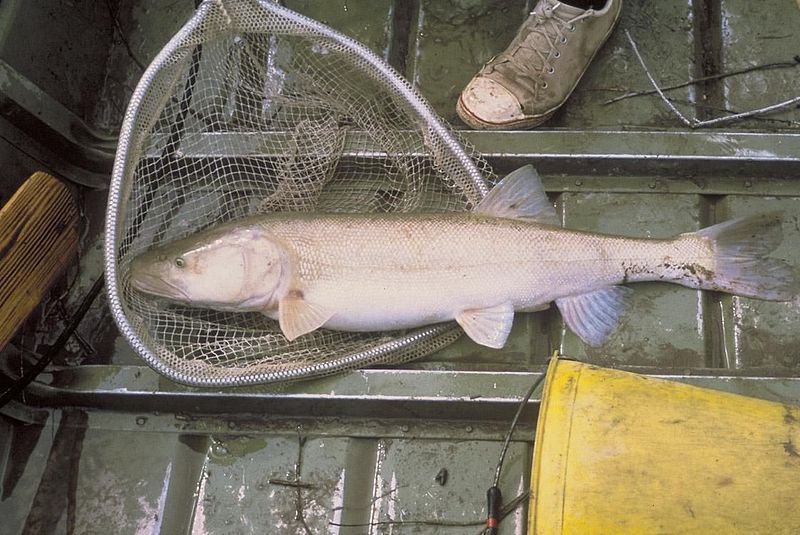The Colorado pikeminnow is the largest native predatory fish in the Colorado River. But as the West has been settled and developed, the river system has been impacted to the detriment of native fish populations forcing many, including the pikeminnow to be listed as endangered species.
On Thursday, July 14, at 6 pm at the Moab Information Center, Chris Michaud from the Utah Division of Wildlife Resources will discuss the findings of the Upper Colorado River Endangered Fish Recovery Program and their effects on the Colorado pikeminnow.
The lecture is co-sponsored by the Canyonlands Natural History Association and The Museum of Moab as part of their free lecture series.
Colorado pikeminnow were once abundant in the main stem of the Colorado River and most of its major tributaries in Colorado, Wyoming, Utah, New Mexico, Arizona, Nevada and California. Today, two wild populations of Colorado pikeminnow are found in the Upper Colorado River Basin – one in the upper Colorado River system and one in the Green River system.
The San Juan River Basin Recovery Implementation Program continues to stock Colorado pikeminnow to develop a separate, self-sustaining population, according to ColoradoRiverRecovery.org.
Zach Ahrens, who works with the endangered fish recovery program, said humans have introduced non-native species to the river, contributing to the Colorado pikeminnow’s decline. Large dams, such as Flaming Gorge and the Glen Canyon dam, also impact the species’ habitat, he said.
“We’ve fragmented it’s habitat by building dams and these dams alter flows, sediment and temperature,” Ahrens said.
Actions being taken to mitigate the impact include water management strategies to provide adequate in-stream flows; the construction of fish passages at major diversion dams to provide endangered fish with access to hundreds of miles of critical habitat; And the development of backwaters for early life stages. Fish populations are also monitored and non-native fish are manged to help natives recover.
The Bureau of Reclamation, which is responsible for the operation of these dams, allocates funding for these types of projects.
“Dams have contributed to the decline of these species in the past, but may also contribute to their recovery,” Ahrens said. “For example, specially-timed releases from Flaming Gorge on the Green River are now being used to benefit the endangered razorback sucker. It’s a good example of how we might recover these fishes while still meeting the needs of the water users.”
Originally listed as endangered by U.S. Fish and Wildlife Service in 1967, pikeminnow were given full protection under the Endangered Species Act in 1973.
Today, the Upper Colorado River Endangered Fish Recovery Program, a multi-stakeholder partnership, is attempting to recover this imperiled species through an adaptive management strategy. Researchers monitor both adult & “young of year” (fish in their first year of life) pikeminnow populations to gain insight into the success or failure of these management actions.
Ahrens and Michaud seem to have a daunting task, but Ahrens said: “It’s not so bad I get to go boating in amazing places. It’s important to learn all you can about these cool animals and their habitat and spread the word.”
The lecture at the Moab Information Center is free and attendees can park in the Information Center parking lot on Center Street, just off of Main Street.
Once-abundant river fish species now endangered
“Dams have contributed to the decline of these species in the past, but may also contribute to their recovery. For example, specially-timed releases from Flaming Gorge on the Green River are now being used to benefit the endangered razorback sucker. It’s a good example of how we might recover these fishes while still meeting the needs of the water users.”
When: Thursday, July 15, 6 p.m.
Where: Moab Information Center, on the corner of Center Street and Main Street
The lecture at the Moab Information Center is free and attendees can park in the Information Center parking lot on Center Street, just off of Main Street.




